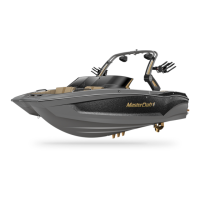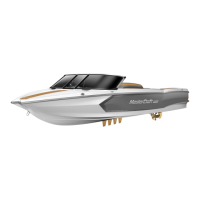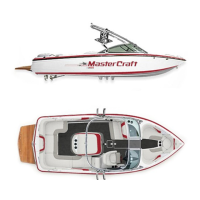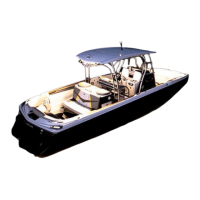aware of your wake and wash. See the Rules of the Open Water
information in the Safety section of this Owner’s Manual.
First Time Operation
When taking to the water for the first time, you must keep in
mind a few general guidelines:
• Practice makes perfect! Start in calm water with no wind or
current and plenty of room until you get a feel for the boat
and its controls.
• Proceed slowly! Give yourself time to think, react and
maneuver.
• Recognize outside forces! Check the wind direction and
velocity, as well as water currents and waves.
• Have a crew on hand! Have friends or family ready with
fenders, lines and a boat hook to assist you when docking,
as well as launching and loading.
• Remember that a boat is not an automobile! Boats cannot
be maneuvered and stopped like a car. Boats steer from the
stern (rear) and have no brakes.
Basic Maneuvering
Steering response is dependent upon three (3) factors: drive
position, motion and throttle. While cruising speed maneuvering
is relatively easy and takes little practice, slow-speed
maneuvering is far more difficult and requires time and practice
to master.
With both steering and propulsion at the rear of the boat, the
initiation of a turn pushes the stern of the boat away from the
direction of the turn. The stern follows a larger turning circle than
the bow. This is especially important to remember when making
maneuvers within close quarters.
Stopping—or checking headway—is a technique that must be
mastered. With no brakes, reverse must be used to stop the
boat. The momentum of the boat will vary according to the load.
Make it a practice to slow to no-wake speed before shifting
into reverse.
When practicing maneuvering techniques, always do so in
open water that is free of traffic. Adequate practice may make
the difference between a pleasurable boating experience or a
potentially damaging (at the very least, embarrassing) one.
For the best engine performance and longevity, the wide-
open-throttle (WOT) engine operation must be near the top
of, but within, the specified WOT operating range. To adjust
the WOT operating range, select a propeller with the proper
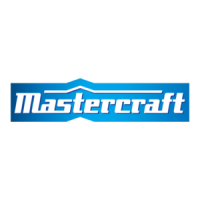
